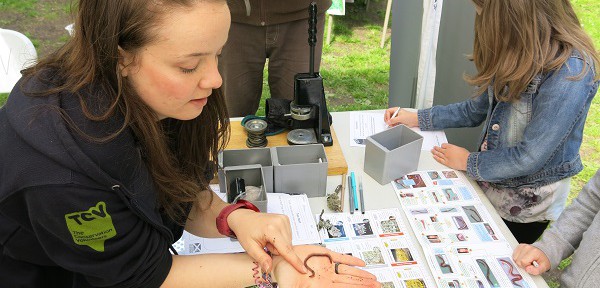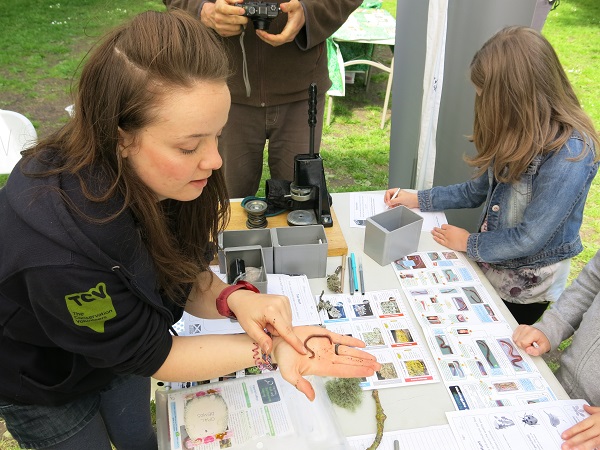
Despite what you might think, Citizen Science is not just a spring and summer activity. There are a number of surveys that can still be carried out over the winter months. TCV’s OPAL community citizen scientist Amy Styles has been out collecting for a worm survey… each to their own!
Whilst out planting daffodil bulbs in Elder Park, Govan we discovered lots and lots of worms in the soil. This is a great thing because worms help to increase the amount of air and water that gets into the soil. They break down organic matter, like leaves and grass into things that plants can use. When they eat, they leave behind castings that are a very valuable type of fertilizer. Good wee wormies!
Interested in finding out what worms are in your garden? Have a look at the Open Air Laboratories (OPAL) soil and earthworm survey. The survey tells you how to get your mitts on some earthworms and then gives you a key to be able to identify which worms you have in your hand. No worms? No problem… The survey also allows you to identify the type of soil you have by moulding it in your hands to form shapes and describing its texture. Once you are done prodding worms and playing with mud it would be very useful to upload your findings to the OPAL website. These results will give us a picture of worms and soil types found across the UK which can be used to spot changes and new species.
Here’s an interesting one to look at, the New Zealand Flat worm. This is a non native worm that was first recorded in Scotland in 1965. What is the problem with this beastie? It eats other worms. The Flatworm seems to have spread form botanic gardens to nurseries and garden centres then to domestic gardens and only more recently to agricultural land. The New Zealand flatworm continues to spread in Scotland but its l impact on the environment, below and above ground, is unknown.
Gardeners are invited to report sightings of New Zealand flatworms (date, number of flatworms and postcode location) during the summer months. In the winter months live samples of flatworm can also be posted to the Institute in a sealed plastic container (for example an old-style photo film canister) along with the same reporting information.
Samples should be marked for the attention of Dr Brian Boag, The James Hutton Institute, Invergowrie, Dundee DD2 5DA and sightings can also be reported to the same address or by email to Brian.Boag@hutton.ac.uk.
Check out loads of great ideas to get involved with citizen science.
